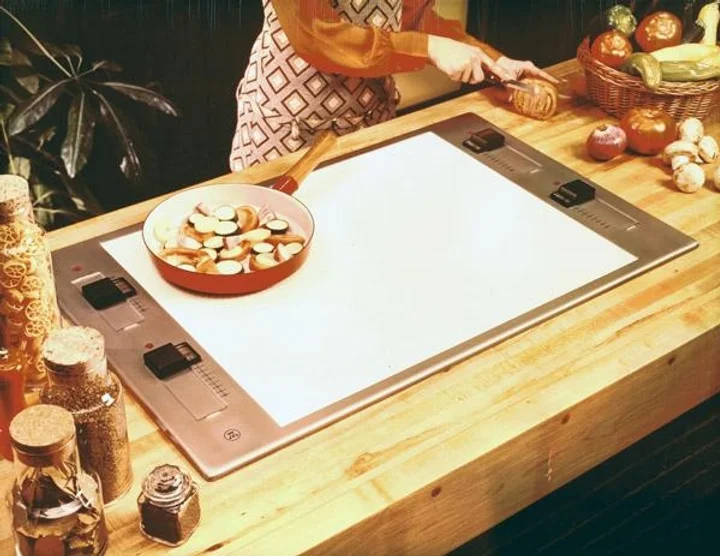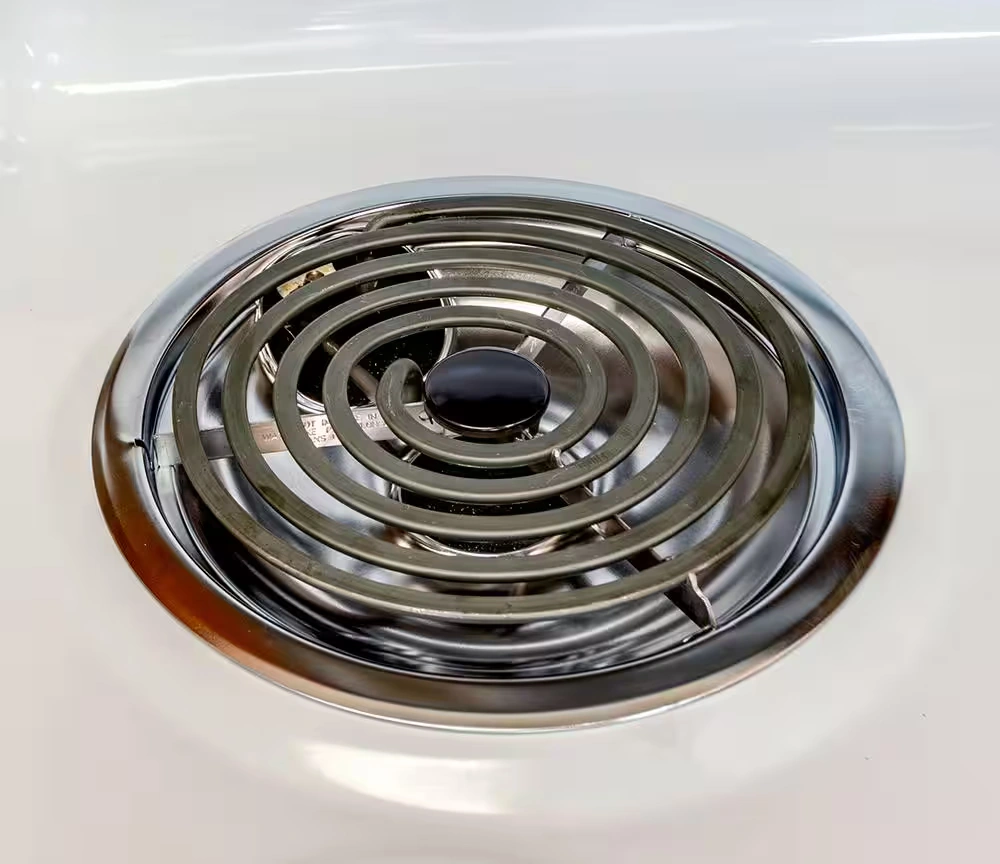Induction vs Electric Ranges: A Buyer's Guide
Induction cooking has been around since the 1970s, but has become widely popular only recently. If you're trying to understand the difference between an induction and conventional electric range, this article will break it down for you.
Cooking appliances haven’t changed much throughout human history. Until recently, a stove was simply a hot surface that you put a cooking vessel on.
Magnetic induction cooking is different. Instead of creating an open flame or hot surface, an induction cooktop makes the cooking vessel itself the heat source. It does this by creating a rapidly oscillating magnetic field underneath the pan. If the pan is magnetic - that is, if a permanent magnet will stick to it - the magnetic field transfers energy directly to the pan, causing it to get hot.
There’s a lot of advantages to this method that we’ll dive into later. One of the distinguishing things is that induction ranges use electricity rather than gas, which many people are switching away from due to indoor air pollution concerns. But ordinary electric ranges have been around before the advent of induction, and they’re usually cheaper.
If you’re shopping for an electric range and you’re not sure if you should choose a conventional electric or induction model, this article will give you a quick introduction to induction cooking and help explain the differences between induction and ordinary electric ranges.
What is magnetic induction cooking?
As described earlier, magnetic induction works by using a magnetic field to heat a pot directly. This means that an induction cooktop – which might still sometimes be colloquially called a “burner” even though it isn’t an open heat source – will only ever get warm due to contact from the hot cookware sitting on top.
You need to use compatible cookware with an induction cooktop. A piece of cookware will work if a permanent magnet will stick to the bottom. This includes cast iron, carbon steel, and 18/0 stainless steel. Other metals include aluminum, copper, and 18/10 and 18/8 stainless steel won’t work with induction. (One solution is to purchase an induction adapter plate. This will eliminate some advantages of induction, but it will let you continue to use your existing cookware.)
Induction cooking isn’t new. The first commercially available induction cooktop was the Cool Top 2 by Westinghouse, which was released in 19731. It sold for $1,500, which is more than $10,000 in today’s dollars!

Today, an induction cooktop can cost less than $1,000. To learn more about induction cooking, you can read my introductory article on the topic.
Stoves, ranges, ovens, and cooktops: cooking appliance terminology explained
Before we get into it, it’s worth clarifying the terminology that describes cooking appliances, which can get a little confusing.
An oven is a heated compartment for baking and broiling. It’s the thing you use to bake your cookies or Thanksgiving turkey.
A cooktop is a flat cooking surface with heating elements. Cooktops are usually part of a range or oven, but standalone cooktops that are installed flush with a countertop are also popular for their clean, stylish design. In Britain, these are also referred to as a hob. Induction cooktops have a durable glass-ceramic surface.
A cooktop will have one or more cooking elements. A single element of an induction cooktop might sometimes be colloquially referred to as a “burner”, even though there’s no flame.
The terms range and stove refer to the same thing: an appliance that combines an oven and cooktop. The terms can be used interchangeably, but KitchenAid says that range is the term most often used by retailers because a stove can also mean a wood-burning stove.
Comparing induction and conventional electric cooktops
This article is specifically about conventional electric and induction ranges. If you are interested in comparing electric cooktops only, you can take a look at my article comparing induction with radiant electric cooktops.
That article is intended to help people understand the difference between smoothtop radiant electric and magnetic induction cooktops (because they appear to be similar), but most of the attributes of radiant cooktops also apply to conventional electric elements too.
What are conventional electric elements?
On that note, when I refer to conventional electric cooktops, I mean electric elements that you place your cookware directly on top of. They may be either a thick coil or solid metal disc, in contrast to radiant electric elements that use thinner wires underneath a glass-ceramic surface.

If you read my article (linked above) comparing radiant with induction cooktops, most of the pros and cons of radiant cooktops also apply to conventional electric cooktops. Here are the key differences:
- Conventional electric elements heat up slower than radiant electric
- Spills are messier and harder to clean up on a conventional element
- Conventional electric elements have a longer lifespan than radiant elements, which may need to replaced after several thousand hours of use
- Conventional electric is cheaper than radiant or induction cooktops
Efficiency of induction and conventional electric cooking compared
Both radiant and conventional electric elements use electric resistance to generate heat, so they have similar efficiencies. One of the key advantages of induction cooktops is that they are much more efficient on average than other types of electric cooktops.
In one study2, the average efficiency of gas, conventional electric, and induction cooktops was 28%, 39% and 70%, respectively. Efficiency means the amount of energy that is transferred to the cookware rather than being lost to the air or otherwise wasted by the cooktop.
Gas and conventional electric generally have worse efficiency than induction because in normal use a lot of heat escapes into the air, especially if the pot is too small for the burner. If the pot is larger than the burner, a conventional electric element can actually match the efficiency of an induction burner: according to the same study, the best efficiency achieved with both conventional and induction elements was 81%.
In practice, the cookware you use won’t be perfectly sized for the burner, which results in efficiency losses with gas and conventional electric elements. Induction cooktops can also lose efficiency with different cookware, but the losses are much lower on average than with other types of cooking elements.
Electric ovens are the same in both induction and conventional ranges
One important thing to understand is that there isn’t such a thing as an induction oven. The oven in any electric range, whether it has a conventional electric, radiant, or induction cooktop, is heated with electric resistance coils. There are no ovens that use magnetic induction to generate heat inside the oven.
This means that when you’re comparing an induction range to other types of electric ranges, it’s only the cooktop that is induction. The oven is always conventional electric.
However, that doesn’t mean all electric ovens are the same. Features such as convection cooking, air frying, Wi-Fi connectivity, and built-in temperature probes differentiate one oven from another.
This means that when you’re shopping for electric ranges, be sure to dive into the oven’s features to help you choose one model over another.
Key differences between induction and conventional electric ranges
As mentioned, when you’re comparing induction to other types of electric ranges, it really comes down to induction versus conventional electric cooktops. The ovens will differ only by features, and not by heating technology.
Induction technology has significant cooking performance and safety advantages. If you find a model in your price range that you like, I would definitely recommend it. That said, there’s a few reasons why you might choose a conventional electric range. Here’s a summary of the main reasons to choose one over another:
Advantages of radiant cooktops:
- Lower cost (roughly 33% less than an equivalent induction model)
- Works with a wider variety of cookware
- More models available (for now)
Advantages of induction cooktops:
- Much better cooking performance
- Higher energy efficiency
- Multiple safety features
- Sensor-based temperature control
Induction cooktops have sensors that provide safety features that other cooking technologies can’t. For example, if you forget a pot on an induction stove and let it boil dry, a temperature sensor will detect when the pot has exceeded a safe temperature and will automatically turn off the element. If like me you’ve ever had to worry about elderly family living alone, this is a great feature.
Temperature sensors also enable induction cooktops to automatically hold a pot at set temperature. This makes it a lot easier if, for example, you want to simmer a pasta sauce for a long time without burning it. Just set a low temperature, and the cooktop will automatically adjust the power output to keep it steady.
Finally, there’s no issue with an induction cooktop about forgetting to turn off a burner. If there’s no cookware present on an element that is turned on, the cooktop will sense this and turn the element off. No more worrying about whether you left your cooktop on before going on vacation!
Power output and electrical requirements of induction and conventional electric ranges
Both induction and conventional electric ranges have similar power requirements. Both require a 240-volt circuit with 30 to 50 amps of power.
The maximum power output of conventional electric cooking elements varies from as little as 800 watts for small simmer elements up to 4,800 watts. Induction ranges can put out even more power - I found a high end model with a 5,500 watt element. Combined with the high efficiency of induction cooking, this level of power output will let you bring even a large stock pot full of water up to a boil very quickly.
Summary: how to choose between induction and conventional electric ranges
When choosing between induction and conventional electric ranges, it really comes down to the cooktop. Induction cooking has many advantages: fast response, higher output, better safety, and high efficiency are some of main ones. The main disadvantage is price: while the price difference between induction and conventional electric ranges is smaller than in the past, you can still expect to pay more for induction.
The ovens in both induction and convention electric ranges use electric resistance, so the efficiency advantages of induction cooktops don’t apply to the oven in an induction range. However, electric ovens these days have advanced features that older ovens don’t have, including air frying and Wi-Fi connectivity, so be sure to include these features in any comparison shopping you do.
References
https://www.systemsixkitchens.co.uk/post/induction-hobs-explained ↩︎
Heat transfer characteristics and cooking efficiency of different sauce pans on various cooktops (Science Direct) https://www.sciencedirect.com/science/article/abs/pii/S1359431115011084 ↩︎



